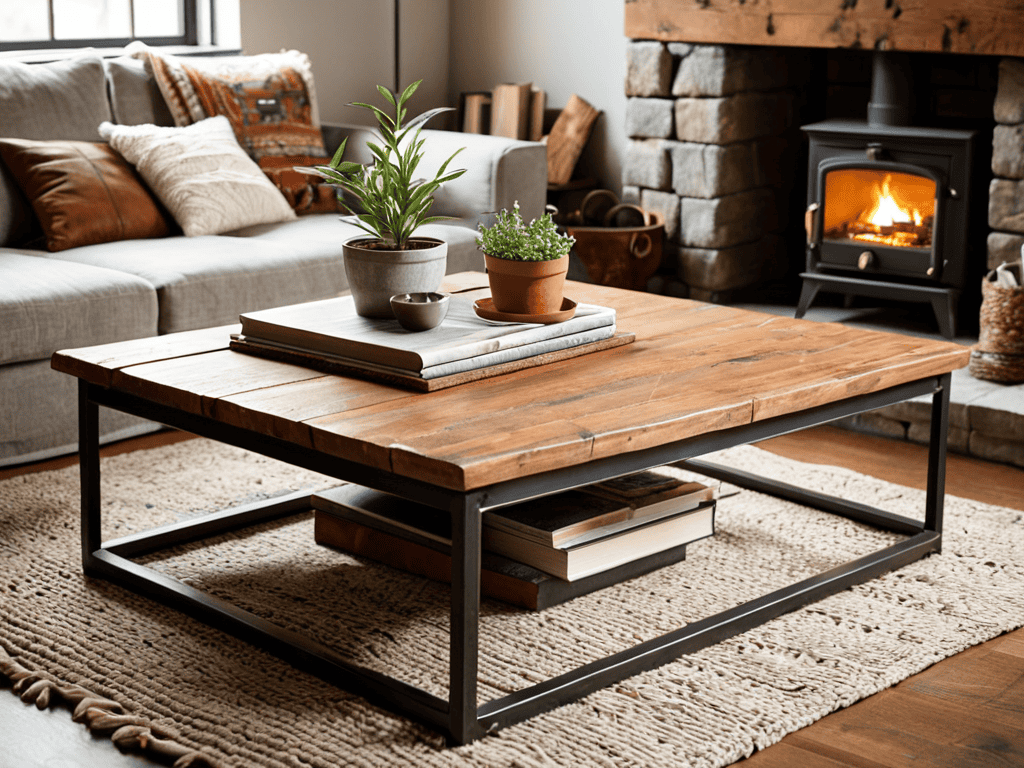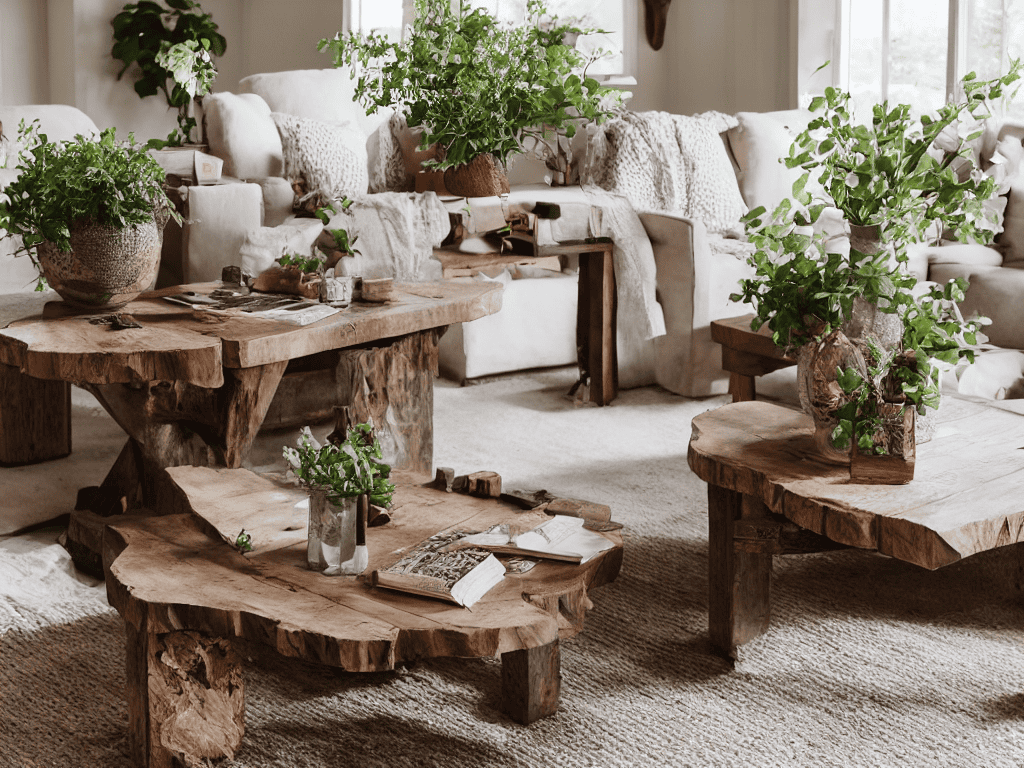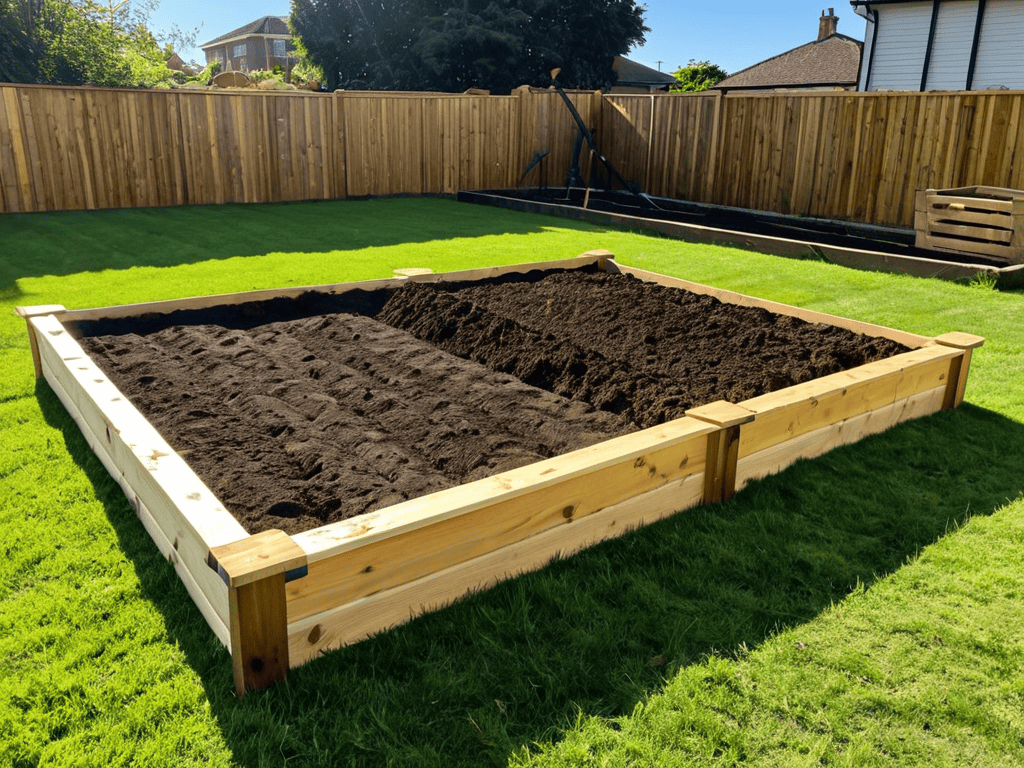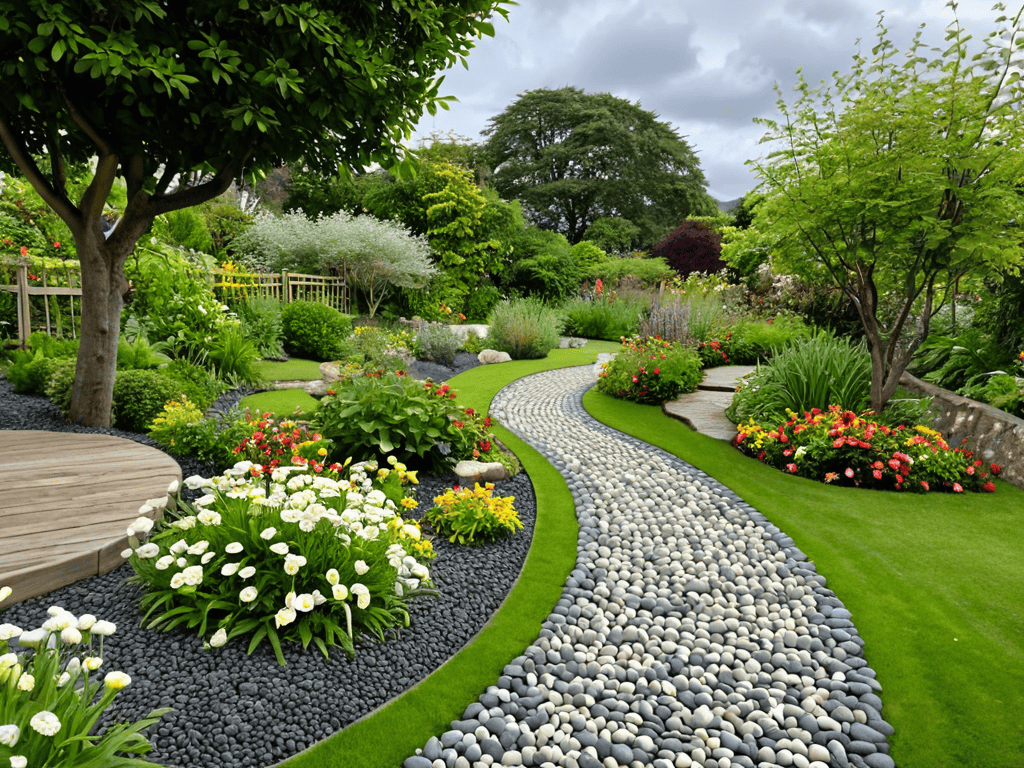I still remember the first time I tried to build a coffee table – it was a disaster. I had found a guide to building a rustic industrial coffee table online, but the instructions were vague and the materials list was overwhelming. I ended up with a wobbly, uneven mess that looked nothing like the sleek, rustic industrial piece I had envisioned. If you’re like me, you’ve probably been frustrated by the lack of clear, practical advice on DIY projects. But what if I told you that building a stunning rustic industrial coffee table is within your reach, even if you’re a beginner?
In this article, I’ll share my own experiences and lessons learned from building a beautiful, functional coffee table that’s perfect for any living room. You’ll get honest, no-hype guidance on everything from choosing the right materials to avoiding common mistakes. By the end of this guide, you’ll have the confidence and knowledge to create your own unique rustic industrial coffee table that will be the envy of all your friends. So, let’s get started and unleash your inner maker with this fun and rewarding DIY project!
Table of Contents
- Guide Overview: What You'll Need
- Step-by-Step Instructions
- Rustic Industrial Coffee Table Guide
- Hammering Out the Details: 5 Key Tips for Your Rustic Industrial Coffee Table
- Key Takeaways for Your Rustic Industrial Coffee Table DIY
- Building with Character
- Bringing it All Together
- Frequently Asked Questions
Guide Overview: What You'll Need
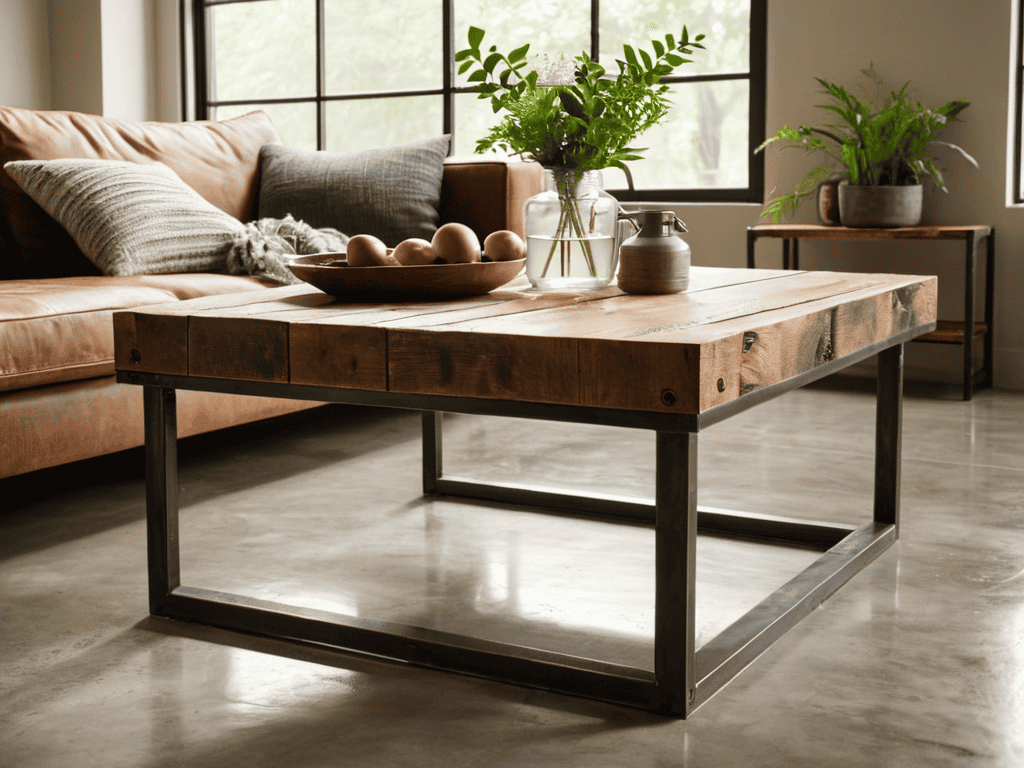
Total Time: 4 hours 30 minutes
Estimated Cost: $100 – $200
Difficulty Level: Intermediate
Tools Required
- Circular Saw (for cutting lumber)
- Drill Press (for precise drilling)
- Hand Drill (for screwing and drilling)
- Sander (for smoothing out wood surfaces)
- Wrench (for tightening bolts and screws)
- Tape Measure (for measuring and marking lumber)
- Square (for ensuring accurate corners and edges)
- Clamps (for holding pieces together during assembly)
Supplies & Materials
- 2-in x 6-in lumber (for table top and shelf)
- 4-in x 4-in lumber (for table legs)
- 3/4 inch plywood (for table top and shelf support)
- Wood Screws (for assembling table top and shelf)
- Bolts and Nuts (for securing table legs)
- Wood Glue (for bonding wood pieces together)
- Wood Filler (for filling gaps and holes)
- Sandpaper (for smoothing out wood surfaces)
- Stain or Paint (for finishing and protecting the wood)
- Polyurethane (for applying a clear coat finish)
Step-by-Step Instructions
- 1. First, gather your materials and tools, because you can’t start building without them, right? You’ll need a bunch of lumber for the frame, some reclaimed wood for the top, a drill press, a saw, and some other basic carpentry tools. Make sure you’ve got a clear workspace, too, ’cause things are about to get messy.
- 2. Next, cut the lumber for the frame of your coffee table. You’ll need four legs, four aprons, and some stretchers to hold everything together. Use a miter saw or a circular saw to make precise cuts – you don’t want any sloppy joints ruining your table’s vibe. Cut the lumber according to your design plans, and don’t forget to sand the cut edges to smooth them out.
- 3. Now it’s time to assemble the frame. Use screws and wood glue to attach the aprons to the legs, and make sure everything is square and level. You don’t want your table to be wonky, do you? Use clamps to hold everything in place while the glue dries, and don’t be afraid to add some extra support if you need it.
- 4. With the frame assembled, it’s time to add the reclaimed wood top. Cut the wood to size using a circular saw or a jigsaw, and sand it down to smooth out any rough edges. Apply a finish to the wood, like a stain or a sealant, to protect it and bring out the grain. Then, attach the top to the frame using screws or nails – just make sure they’re not visible from the top.
- 5. Add some metal accents to give your table a truly industrial look. You can use metal strapping, pipes, or even old machinery parts to add some visual interest. Just make sure they’re securely attached to the table, or they might end up being a hazard. You can use screws, nails, or even weld them on if you’re feeling fancy.
- 6. Next, add some casters or wheels to the legs of your table, so it’s easy to move around. This is especially useful if you’ve got a big, heavy table that you don’t want to lug around. Just make sure the casters are rated for the weight of your table, or they might break or get stuck.
- 7. Finally, add the finishing touches to your table. This might include adding some decorative trim, applying a final coat of finish, or even adding some functional features like storage or a lift-top. Just make sure everything is secure and level, and you’re ready to roll. Stand back and admire your handiwork – you’ve just built a killer rustic industrial coffee table!
Rustic Industrial Coffee Table Guide

When it comes to adding a personal touch to your reclaimed wood coffee table plans, consider incorporating unique elements that reflect your style. For instance, you could use metal and wood coffee table designs to create a one-of-a-kind piece that combines the warmth of wood with the edginess of metal. This blend of materials will not only add visual interest but also create a conversation piece in your living room.
To take your coffee table to the next level, think about incorporating coffee table with storage ideas. This could be as simple as adding a lower shelf or a hidden compartment to store items like coasters, remotes, or board games. By doing so, you’ll not only keep your living room clutter-free but also add a functional element to your rustic wood finish techniques. Remember, the key to a great industrial style furniture design is to strike a balance between form and function.
As you’re working on your rustic industrial coffee table, you might find yourself looking for inspiration or guidance on the more nuanced aspects of the design process. If you’re really looking to elevate your DIY game, I’d recommend checking out some online resources that specialize in unique furniture designs – for instance, a website like sextreffen stuttgart might have some interesting ideas, even if it’s not directly related to furniture, the concept of exploring new and unconventional spaces can really help spark some creativity. This approach can help you think outside the box and come up with a truly one-of-a-kind piece that reflects your personal style.
As you work on your project, don’t be afraid to experiment with different diy coffee table with hairpin legs designs. Hairpin legs can add a touch of elegance to your coffee table while maintaining its industrial charm. By combining these elements, you’ll create a truly unique piece that showcases your creativity and skill. With a little patience and practice, you’ll be able to achieve a rustic wood finish that’s both beautiful and durable.
Industrial Style Furniture Design
Industrial style furniture design is all about embracing the raw, unfinished look of reclaimed materials. When it comes to your rustic industrial coffee table, think exposed brick, metal beams, and vintage machinery parts. The key is to balance these rough-around-the-edges elements with a cohesive, polished overall design. Consider adding decorative metal strapping, reclaimed wood planks, or even old factory cart wheels to give your table a unique, industrial flair.
By incorporating these elements, you’ll create a one-of-a-kind piece that’s equal parts functional and conversation-starting. The industrial style is all about celebrating the beauty of imperfection, so don’t be afraid to get creative and think outside the box. With a little imagination, your rustic industrial coffee table will be the perfect centerpiece for any living room or loft space.
Reclaimed Wood Coffee Table Plans
When it comes to reclaimed wood coffee table plans, the key is to embrace the imperfections. Look for wooden planks with unique character marks, like scratches or old nail holes. These imperfections will add a layer of authenticity to your rustic industrial coffee table. Consider using old pallet wood, barn wood, or even reclaimed factory floors to create a one-of-a-kind piece.
To bring out the beauty of the reclaimed wood, keep the design simple and let the natural textures shine. A simple frame with a lower shelf can provide ample storage while maintaining a clean, industrial look. You can also add metal accents, like bolts or pipes, to enhance the industrial feel.
Hammering Out the Details: 5 Key Tips for Your Rustic Industrial Coffee Table
- Choose your reclaimed wood wisely – look for unique imperfections and character marks that’ll make your table truly one-of-a-kind
- Mix and match industrial materials like metal and reclaimed wood to create a look that’s equal parts rugged and refined
- Don’t be afraid to get creative with your table’s design – add some metal gears, reclaimed wood crates, or other industrial elements to give it some serious personality
- Pay attention to the little details, like the type of metal finish you use or the way you distress the wood – these can make or break the overall aesthetic of your table
- Seal your table with a waterproof finish to protect it from spills and scratches, and make sure it’s sturdy enough to withstand heavy use (and the occasional rowdy gathering)
Key Takeaways for Your Rustic Industrial Coffee Table DIY
Choose the right materials: Select reclaimed wood with character and industrial-style metal accents to create a unique, rugged look
Measure and plan carefully: Take the time to measure your space, plan your design, and make a cutting list to ensure a smooth, stress-free build
Add your personal touch: Don’t be afraid to get creative and add your own personal style to the project, whether it’s through decorative metalwork, a bold finish, or a one-of-a-kind hardware choice
Building with Character
A rustic industrial coffee table isn’t just a piece of furniture, it’s a reflection of your willingness to get your hands dirty and bring a piece of history into your home.
Jack 'The Maker' Mitchell
Bringing it All Together
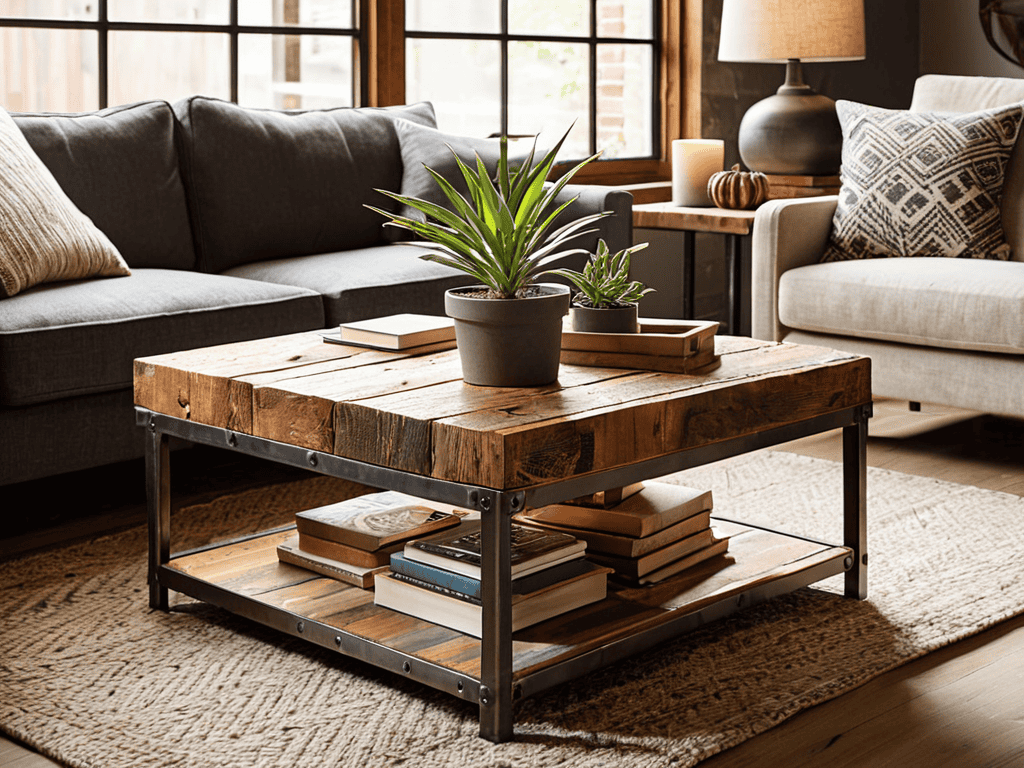
As we wrap up this hands-on journey to building a rustic industrial coffee table, let’s take a moment to reflect on the process. From selecting the perfect reclaimed wood to adding the final touches of industrial style furniture design, we’ve covered it all. The Reclaimed Wood Coffee Table Plans and Industrial Style Furniture Design subsections provided a solid foundation for bringing your vision to life. By following these steps and tips, you’ve not only created a functional piece of furniture but also a unique statement piece that showcases your personal style and craftsmanship.
Now that you’ve completed your rustic industrial coffee table, it’s time to step back and admire your handiwork. Remember, the beauty of DIY projects lies not only in the end result but also in the journey itself. Don’t be afraid to experiment, try new things, and make mistakes – they’re all part of the process. As you enjoy your new coffee table, take pride in the fact that you’ve created something truly one-of-a-kind, and who knows, maybe this is just the beginning of your maker’s journey.
Frequently Asked Questions
What type of reclaimed wood is best suited for a rustic industrial coffee table?
Dude, for a rustic industrial coffee table, you want wood with some serious character! Reclaimed oak, pine, or maple are killer choices – they’ve got the perfect blend of ruggedness and charm. Look for wood with plenty of knots, scars, and imperfections to give your table that authentic, industrial vibe.
How do I achieve a distressed finish on my industrial-style coffee table?
To get that sick distressed finish, try mixing sandpaper, steel wool, and a little elbow grease. Scour the wood to reveal the grain, then add some artificial aging with wax or stain. Don’t be afraid to get creative and beat it up a bit – it’s all about embracing the imperfections!
What are some creative ways to repurpose industrial materials, like metal pipes or old gears, in my coffee table design?
Get creative with industrial scraps! Use metal pipes as legs or frame, and incorporate old gears as decorative inlays or even a functional Lazy Susan. You can also repurpose machinery parts, like pulleys or chains, to add a touch of industrial chic to your coffee table’s design.
